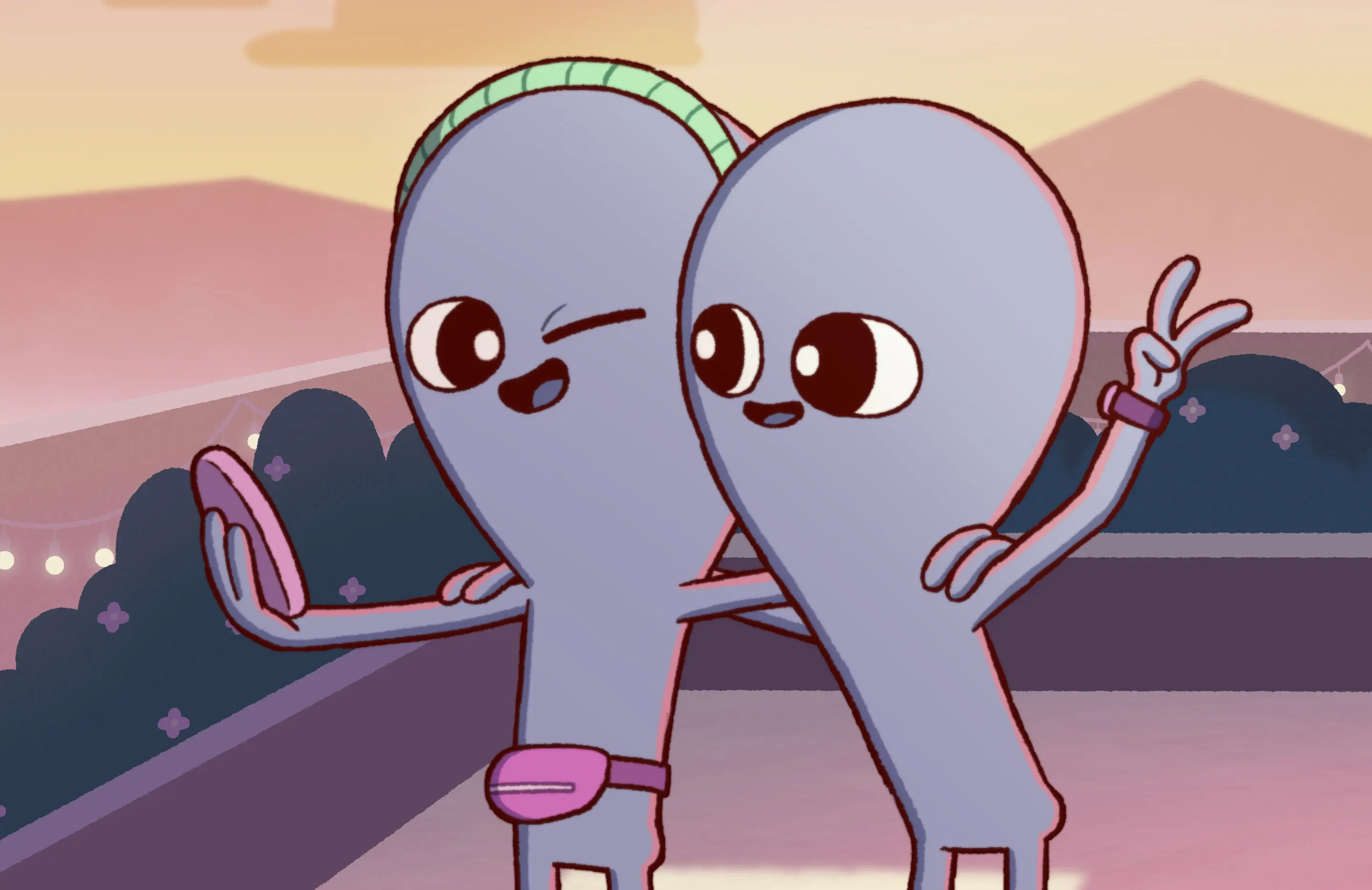Dan Harmon's Strange Planet Adaptation Works Best in Small Doses
-
 Strange Planet (Photo: Apple TV+)
Strange Planet (Photo: Apple TV+)For as complicated and mysterious as existence can be, sometimes a simple explanation can put things into perspective. Celebrating a birthday is just acknowledging that the planet is in the same place in the solar system as it was when that person “emerged.” Getting a promotion is just being rewarded for being responsible with more responsibilities. When discussing things in plain language, everything seems more absurd, but also more manageable. If having anxiety makes someone want to scream, why wouldn’t they just scream and move on? For the beings in Apple TV+’s Strange Planet, sometimes it really is just that easy.
The animated series from Dan Harmon and Nathan W. Pyle is based on the latter’s webcomic of the same name, which went viral when it hit Instagram in 2019. The four-panel comics feature blue, blob-like creatures dealing with normal human scenarios in extremely matter-of-fact ways, highlighting the oddity of everyday habits. Their short and sweet nature made them extremely shareable (and easy to merchandise), reliable for a chuckle. The series fleshes out the, well, strange planet that these creatures all live on while still maintaining that straightforward delivery. And it does work, to a point.
While Pyle did eventually publish a series of Strange Planet books filled with multiple comics, they didn’t form a complete narrative to be read all at once. Apple TV+’s Strange Planet attempts to tie moments from the comics together with some narrative arcs, but the episodes themselves still remain as separate vignettes, each focused on a specific topic like aging, pet ownership, and companionship. This only heightens the feeling that the comics were never really meant to be part of a bigger whole — they’re more episodic in nature.
For the most part, each voice actor sticks to an almost robotic delivery to mirror the tone of the words written in each comic — even in emotional scenes, there’s little wavering in the delivery. D’Arcy Carden and Danny Pudi as various creatures sound as if they’re channeling their past roles of Janet (The Good Place) and Abed (Community), respectively. That even-keeled speech is part of the comedy — hearing someone calmly and evenly tell a plane full of customers that there is reason to be fearful is funnier than if that person was overcome with dread or hysteria. But it can also get old quickly, and some well-written jokes get lost when the tenor turns into a steady hum that can easily be ignored as white noise.
The series’s visuals have the same effect — the light pinks, blues, and purples don’t make for the most dynamic scenes, and the similar creature designs make it difficult to distinguish between some of the characters as the show dips in and out of different beings’ storylines throughout the season. But it’s also that combination of calming animation and ASMR-like voices that makes the series easy to watch. Each episode offers a 20ish-minute reprieve from the harshness of reality, which feels like just enough.
The overall effect is a surprising one from series co-creator Dan Harmon. While much of his work touches on existentialism and life’s big questions, Strange Planet offers a more optimistic view of the world than Community or Rick and Morty, and decidedly less grotesque visuals than the latter. Strange Planet features a softer, gentler Harmon. Because Earth as we know it doesn’t exist in this world, he resists pop culture references and meta jokes that are plentiful in his other work. And there’s a noticeable lack of Harmon’s signature cynicism and snark, which allows his knack for the nonsensical and silly to come to the forefront.
Strange Planet becomes more interesting when it stops trying to simply re-create the webcomic. Original songs (another of Harmon’s signatures, especially throughout Rick and Morty) are used to tackle the same, sometimes very basic concepts introduced by the comic, but with rhyming couplets and a steady bassline that inject a little more energy into the episodes. Music is also used throughout to explore another very human concept: sometimes complex emotions are more easily expressed through songs than speaking. Some of the season’s best episodes — Episode 1, “Flying Machine,” and Episode 6, “Key Change” — revolve around musicians working through sadness, shame, and joy with tunes that are equal parts catchy and poignant.
Even those episodes, though, are best appreciated one at a time. In many ways, it’s a reflection of the source material — audiences found Pyle’s work because they were drawn to singular four-panel comics that speak for themselves. Similarly, each episode of Strange Planet stands on its own, and Apple TV+’s weekly release schedule gives them room to breathe. The series doesn’t feature cliffhangers or complicated narratives that may inspire later binge watching, and that’s just fine. Some shows are meant to be taken in small doses, and Strange Planet is one of them.
Strange Planet premieres August 9 on Apple TV+ with new episodes dropping every Wednesday.
Brianna Wellen is a TV Reporter at Primetimer who became obsessed with television when her parents let her stay up late to watch E.R.
TOPICS: Strange Planet, Apple TV+, Dan Harmon, Danny Pudi, D'Arcy Carden, Nathan Pyle